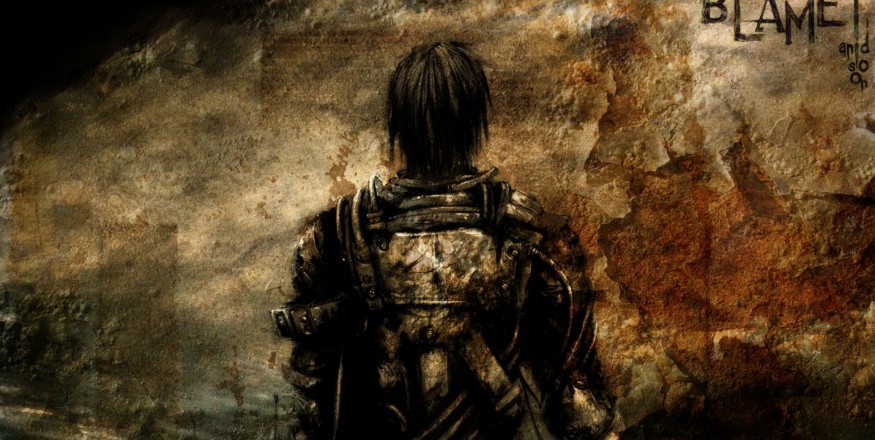The Lesser Key of Solomon, also known as Clavicula Salomonis Regis or Lemegeton, is an anonymous grimoire (or spell book) on demonology. It was compiled in the mid-17th century, mostly from materials a couple of centuries older. It is divided into five books—the Ars Goetia, Ars Theurgia-Goetia, Ars Paulina, Ars Almadel, and Ars Notoria.919Please respect copyright.PENANADFrdkQI6iJ
Ars Goetia919Please respect copyright.PENANAemy89UsKKW
The most obvious source for the Ars Goetia is Johann Weyer's Pseudomonarchia Daemonum in his De praestigiis daemonum. Weyer does not cite, and is unaware of, any other books in the Lemegeton, indicating that the Lemegeton was derived from his work, not the other way around. The order of the spirits was changed between the two, four additional spirits were added to the later work, and one spirit (Pruflas) was omitted. The omission of Pruflas, a mistake that also occurs in an edition of Pseudomonarchia Daemonum cited in Reginald Scot's The Discoverie of Witchcraft, indicates that the Ars Goetia could not have been compiled before 1570. Indeed, it appears that the Ars Goetia is more dependent upon Scot's translation of Weyer than Weyer's work in itself. Additionally, some material was used from Heinrich Cornelius Agrippa's Three Books of Occult Philosophy, the Heptameron by pseudo-Pietro d'Abano, and the Magical Calendar.
Weyer's Officium Spirituum, which is likely related to a 1583 manuscript titled The Office of Spirits, appears to have ultimately been an elaboration on a 15th-century manuscript titled Le Livre des Esperitz (of which 30 of its 47 spirits are nearly identical to spirits in the Ars Goetia).
In a slightly later copy made by Thomas Rudd, this portion was labelled "Liber Malorum Spirituum seu Goetia", and the seals and demons were paired with those of the 72 angels of the Shemhamphorasch, who were intended to protect the conjurer and control the demons he summoned. The angelic names and seals were derived from a manuscript by Blaise de Vigenère, whose papers were also used by Samuel Liddell MacGregor Mathers in his works for the Hermetic Order of the Golden Dawn. Rudd may have derived his copy of Liber Malorum Spirituum from a now-lost work by Johannes Trithemius, who taught Agrippa, who in turn taught Weyer.
This portion of the work was later translated by S. L. MacGregor Mathers and published by Aleister Crowley under the title The Book of the Goetia of Solomon the King. Crowley added some additional invocations previously unrelated to the original work, as well as essays describing the rituals as psychological exploration instead of demon summoning.919Please respect copyright.PENANAZ4bCv4maZc
The Seventy-Two Demons
The demons' names (given below) are taken from the Ars Goetia, which differs in terms of number and ranking from the Pseudomonarchia Daemonum of Weyer. As a result of multiple translations, there are multiple spellings for some of the names, which are given in the articles concerning them.
1) King Bael919Please respect copyright.PENANAS9ZW4ImGaa
2) Duke Agares919Please respect copyright.PENANAkB8Irzj4Kw
3) Prince Vassago919Please respect copyright.PENANAV8ZXOLWb0N
4) Marquis Samigina919Please respect copyright.PENANAc0o3sq48OT
5) President Marbas919Please respect copyright.PENANA9DzlYVmgvM
6) Duke Valefor919Please respect copyright.PENANASt4RC2kS4R
7) Marquis Amon919Please respect copyright.PENANAF0rEvIAuuU
8) Duke Barbatos919Please respect copyright.PENANAbWfi9YTuAR
9) King Paimon919Please respect copyright.PENANA8Dda9caPta
10) President Buer919Please respect copyright.PENANAlPaS9nHLCu
11) Duke Gusion919Please respect copyright.PENANAEtNESRpGpJ
12) Prince Sitri919Please respect copyright.PENANAOpiJxWWRNF
13) King Beleth919Please respect copyright.PENANA7NfzOmuot0
14) Marquis Leraje919Please respect copyright.PENANAs0CJpUNFUB
15) Duke Eligos919Please respect copyright.PENANAaj5UKyJ1tg
16) Duke Zepar919Please respect copyright.PENANAPmy09A8MFY
17) Count/President Botis919Please respect copyright.PENANApjaomTDXoA
18) Duke Bathin919Please respect copyright.PENANANDro5atcuW
19) Duke Sallos919Please respect copyright.PENANAQmmvOYNQ4X
20) King Purson919Please respect copyright.PENANAjoOygh6Ayw
21) Count/President Marax919Please respect copyright.PENANATmG7su5Quv
22) Count/Prince Ipos919Please respect copyright.PENANAJW1G2jERKS
23) Duke Aim919Please respect copyright.PENANApbJwMmE5eA
24) Marquis Naberius919Please respect copyright.PENANAUZ3yURb2Dx
25) Count/President Glasya-Labolas919Please respect copyright.PENANA0c4WVpguDJ
26) Duke Buné919Please respect copyright.PENANA8qRfhaBZsD
27) Marquis/Count Ronové919Please respect copyright.PENANAAwH14VOBAD
28) Duke Berith919Please respect copyright.PENANAJAaL9jMQgs
29) Duke Astaroth919Please respect copyright.PENANAlT4CH8Wyba
30) Marquis Forneus919Please respect copyright.PENANAApMEiBQ2fH
31) President Foras919Please respect copyright.PENANA59sQrfVVle
32) King Asmoday919Please respect copyright.PENANARuc7LgPeWk
33) Prince/President Gäap919Please respect copyright.PENANAiRfo9Lwm3c
34) Count Furfur919Please respect copyright.PENANAQ3gvkdIiS0
35) Marquis Marchosias919Please respect copyright.PENANAAvjPAU5K57
36) Prince Stolas919Please respect copyright.PENANA5USJ1v6tOP
37) Marquis Phenex919Please respect copyright.PENANAGKLRNx7Ufm
38) Count Halphas919Please respect copyright.PENANAgZxxRme1mR
39) President Malphas919Please respect copyright.PENANAzJSpBm4NDG
40) Count Räum919Please respect copyright.PENANA6mvvPPPbuS
41) Duke Focalor919Please respect copyright.PENANAO8AMJF8TPw
42) Duke Vepar919Please respect copyright.PENANAOjHX1ImSml
43) Marquis Sabnock919Please respect copyright.PENANAz9z8K48eBE
44) Marquis Shax919Please respect copyright.PENANAvG9MCz3FV5
45) King/Count Viné919Please respect copyright.PENANAuGBhBbKMvi
46) Count Bifrons919Please respect copyright.PENANAnmWu5ufrC9
47) Duke Vual919Please respect copyright.PENANAiOwsc4mo3Y
48) President Haagenti919Please respect copyright.PENANAH6RHN9FgtQ
49) Duke Crocell919Please respect copyright.PENANAsE7zSJZ2hB
50) Knight Furcas919Please respect copyright.PENANAOPniHFABwo
51) King Balam919Please respect copyright.PENANAUwqIyqpJIx
52) Duke Alloces919Please respect copyright.PENANApzcPJxpgfD
53) President Caim919Please respect copyright.PENANAu9DJspDU8p
54) Duke/Count Murmur919Please respect copyright.PENANAQz1XhD78DY
55) Prince Orobas919Please respect copyright.PENANAhTUdKq0paJ
56) Duke Gremory919Please respect copyright.PENANAUyjtBjIVsN
57) President Ose919Please respect copyright.PENANAQTrpcl3Aun
58) President Amy919Please respect copyright.PENANAyQPquoWdlo
59) Marquis Orias919Please respect copyright.PENANARkUMppRZe0
60) Duke Vapula919Please respect copyright.PENANAeOTHDpg44d
61) King/President Zagan919Please respect copyright.PENANAG6JjsjbnRi
62) President Valac919Please respect copyright.PENANAzej6E15DWj
63) Marquis Andras919Please respect copyright.PENANAzDsKDaDuOl
64) Duke Flauros919Please respect copyright.PENANAqcITNoi5dv
65) Marquis Andrealphus919Please respect copyright.PENANAboeBamcPi6
66) Marquis Kimaris919Please respect copyright.PENANA2XESRf01Kn
67) Duke Amdusias919Please respect copyright.PENANAM9ebCAv85s
68) King Belial919Please respect copyright.PENANAMhDE3iFjqP
69) Marquis Decarabia919Please respect copyright.PENANAfC69Ievom6
70) Prince Seere919Please respect copyright.PENANAL0kgFR6C4K
71) Duke Dantalion919Please respect copyright.PENANAnDtIVA7Yjn
72) Count Andromalius
The demons are described as being commanded by four kings of the cardinal directions: Amaymon (East), Corson (West), Ziminiar (North), and Gaap (South). A footnote in one variant edition instead lists them as Oriens or Uriens, Paymon or Paymonia, Ariton or Egyn, and Amaymon or Amaimon, alternatively known as Samael, Azazel, Azael, and Mahazael (purportedly their preferred rabbinic names).[10] Agrippa's Occult Philosophy lists the kings of the cardinal directions as Urieus (East), Amaymon (South), Paymon (West), and Egin (North); again providing the alternate names Samuel (i.e. Samael), Azazel, Azael, and Mahazuel. The Magical Calendar lists them as Bael, Moymon, Poymon, and Egin, though Peterson notes that some variant editions instead list '"Asmodel in the East, Amaymon in the South, Paymon in the West, and Aegym in the North"; "Oriens, Paymon, Egyn, and Amaymon"; or "Amodeo [sic] (king of the East), Paymon (king of the West), Egion (king of the North), and Maimon."919Please respect copyright.PENANANoX23HgjMd
Ars Theurgia Goetia919Please respect copyright.PENANAAG5jLSycTJ
The Ars Theurgia Goetia mostly derives from Trithemius's Steganographia, though the seals and order for the spirits are different due to corrupted transmission via manuscript. Rituals not found in Steganographia were added, in some ways conflicting with similar rituals found in the Ars Goetia and Ars Paulina. Most of the spirits summoned are tied to points on a compass, four Emperors tied to the cardinal points (Carnesiel in the East, Amenadiel in the West, Demoriel in the North and Caspiel in the South), sixteen Dukes tied to cardinal points, inter-cardinal points, additional directions between those. There are an additional eleven Wandering Princes, totaling thirty one spirit leaders who each rule several to a few dozen spirits.919Please respect copyright.PENANAfcBuUK5B78
919Please respect copyright.PENANAEHECXbxbVe
Ars Paulina919Please respect copyright.PENANA7Z2ZGeZ9WO
Derived from book two of Trithemius's Steganographia and from portions of the Heptameron, but purportedly delivered by Paul the Apostle instead of (as claimed by Trithemius) Raziel. Elements from The Magical Calendar, astrological seals by Robert Turner's 1656 translation of Paracelsus's Archidoxes of Magic, and repeated mentions of guns and the year 1641 indicate that this portion was written in the later half of the seventeenth century. Traditions of Paul communicating with heavenly powers are almost as old as Christianity itself, as seen in some interpretations of 2 Corinthians 12:2-4 and the apocryphal Apocalypse of Paul. The Ars Paulina is in turn divided into two books, the first detailing twenty-four angels aligned with the twenty-four hours of the day, the second (derived more from the Heptameron) detailing the 360 spirits of the degrees of the zodiac.919Please respect copyright.PENANAl8abPCS9dM
Ars Almadel919Please respect copyright.PENANAyKPy6pjbsW
Mentioned by Trithemius and Weyer, the latter of whom claimed an Arabic origin for the work. A 15th-century copy is attested to by Robert Turner, and Hebrew copies were discovered in the 20th century. The Ars Almadel instructs the magician on how to create a wax tablet with specific designs intended to contact angels via scrying.919Please respect copyright.PENANAFlMx0AeN7K
Ars Notoria919Please respect copyright.PENANAvgoKbhffPo
The oldest known portion of the Lemegeton, the Ars Notoria (or Notory Art) was first mentioned by Michael Scot in 1236 (and thus was written earlier). The Ars Notoria contains a series of prayers (related to those in The Sworn Book of Honorius) intended to grant eidetic memory and instantaneous learning to the magician. Some copies and editions of the Lemegeton omit this work entirely; A. E. Waite ignores it completely when describing the Lemegeton. It is also known as the Ars Nova.919Please respect copyright.PENANA9ZZCzckqKE
919Please respect copyright.PENANAAlSl49TDXk
It has also been said to be the origin of Pandora's box and where the seven deadly sins were born.
1 Gula (gluttony)919Please respect copyright.PENANAaj1mZHiZTN
2 Luxuria (lust, fornication)919Please respect copyright.PENANA59bOQDg9tJ
3 Avaritia (avarice/greed)919Please respect copyright.PENANALE9phiod7E
4 Superbia (pride, hubris)919Please respect copyright.PENANAEBVJL83EJ7
5 Invidia (Envy)919Please respect copyright.PENANAGzcVEUzzVv
6 Ira (wrath)919Please respect copyright.PENANAyGyilcUcDy
7 Acedia (sloth)919Please respect copyright.PENANAWfqDaYyyRp
If you look any further into it, beware your surrounding... You will uncover, the truth.
ns 15.158.61.17da2





















